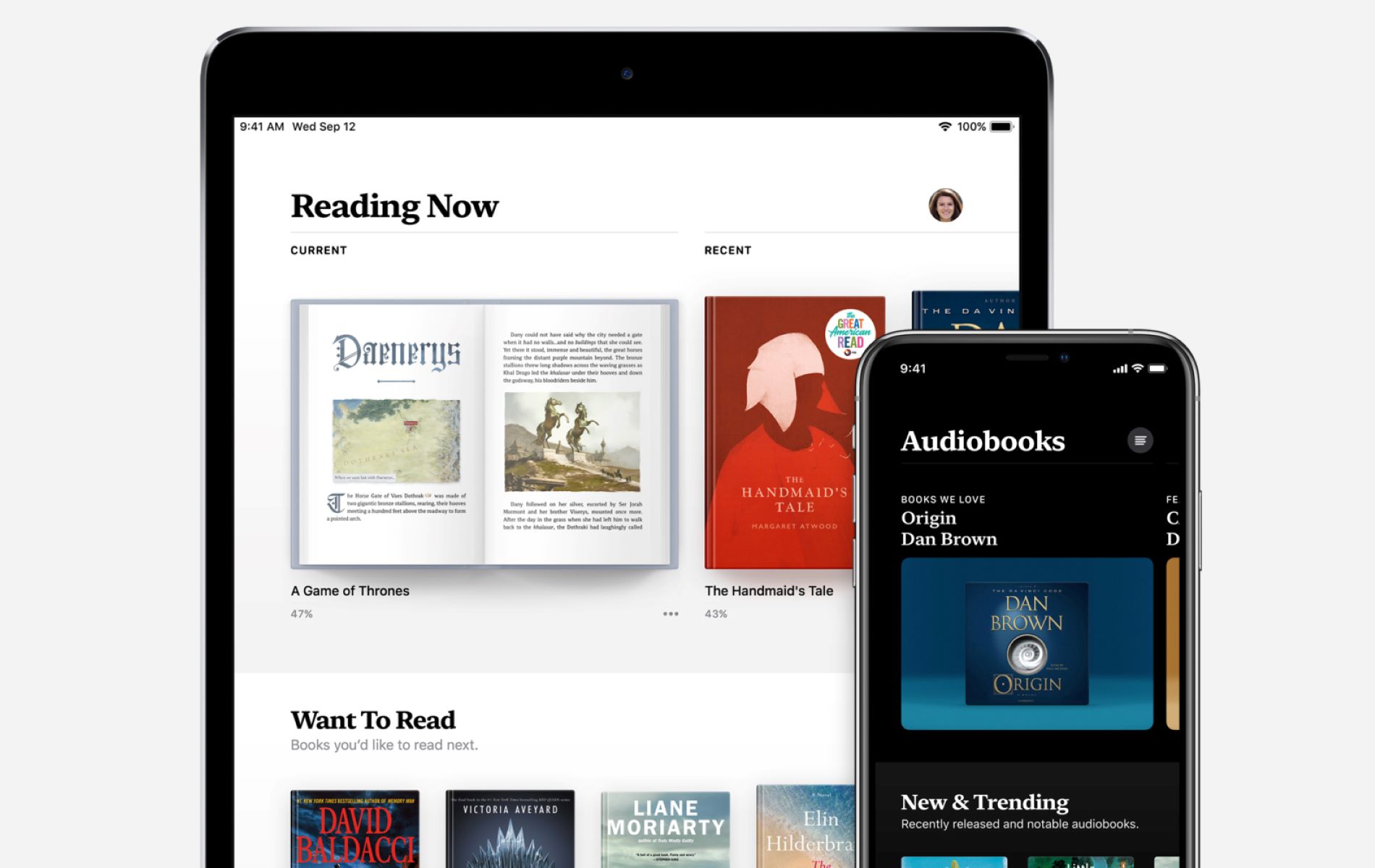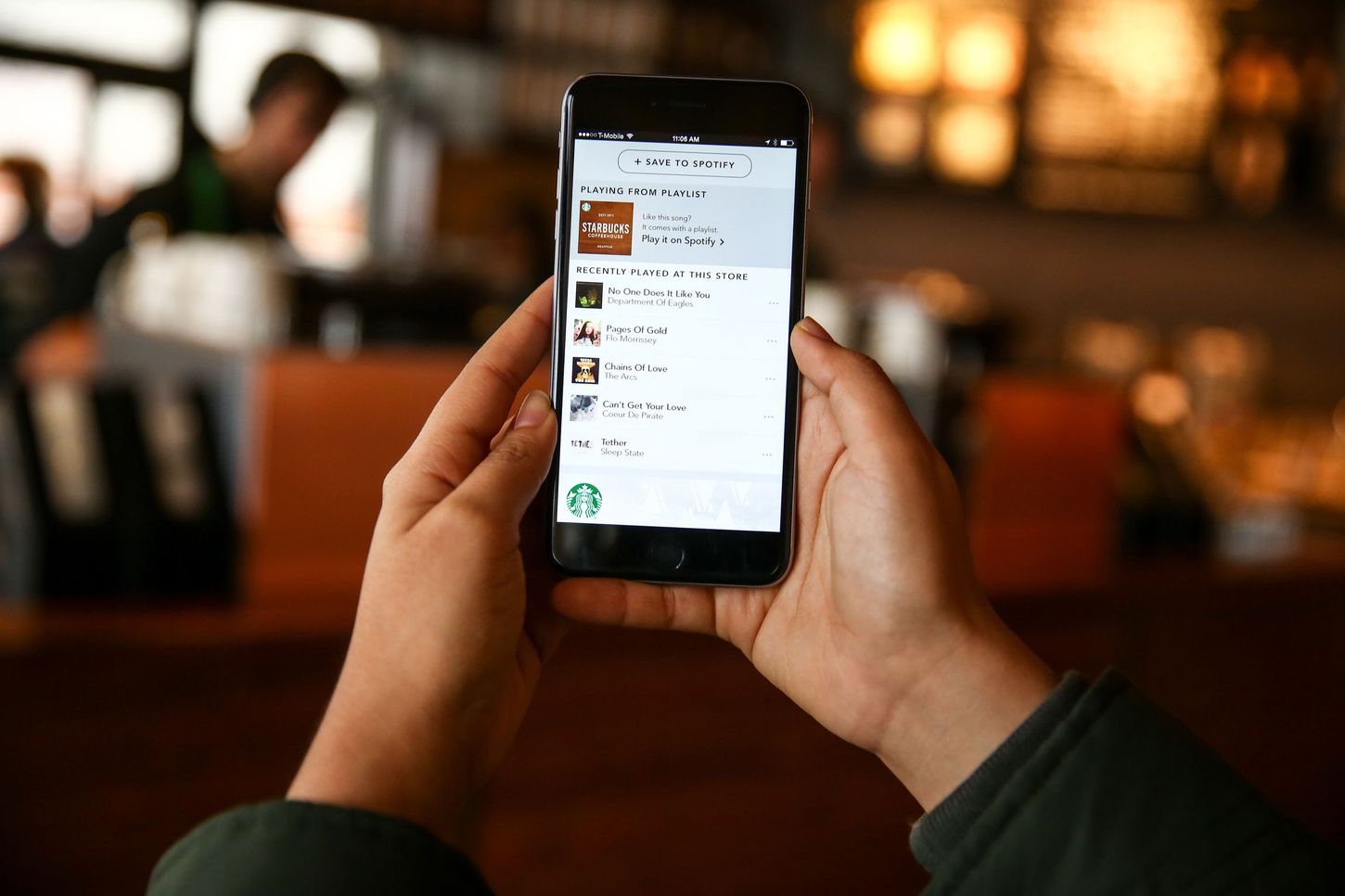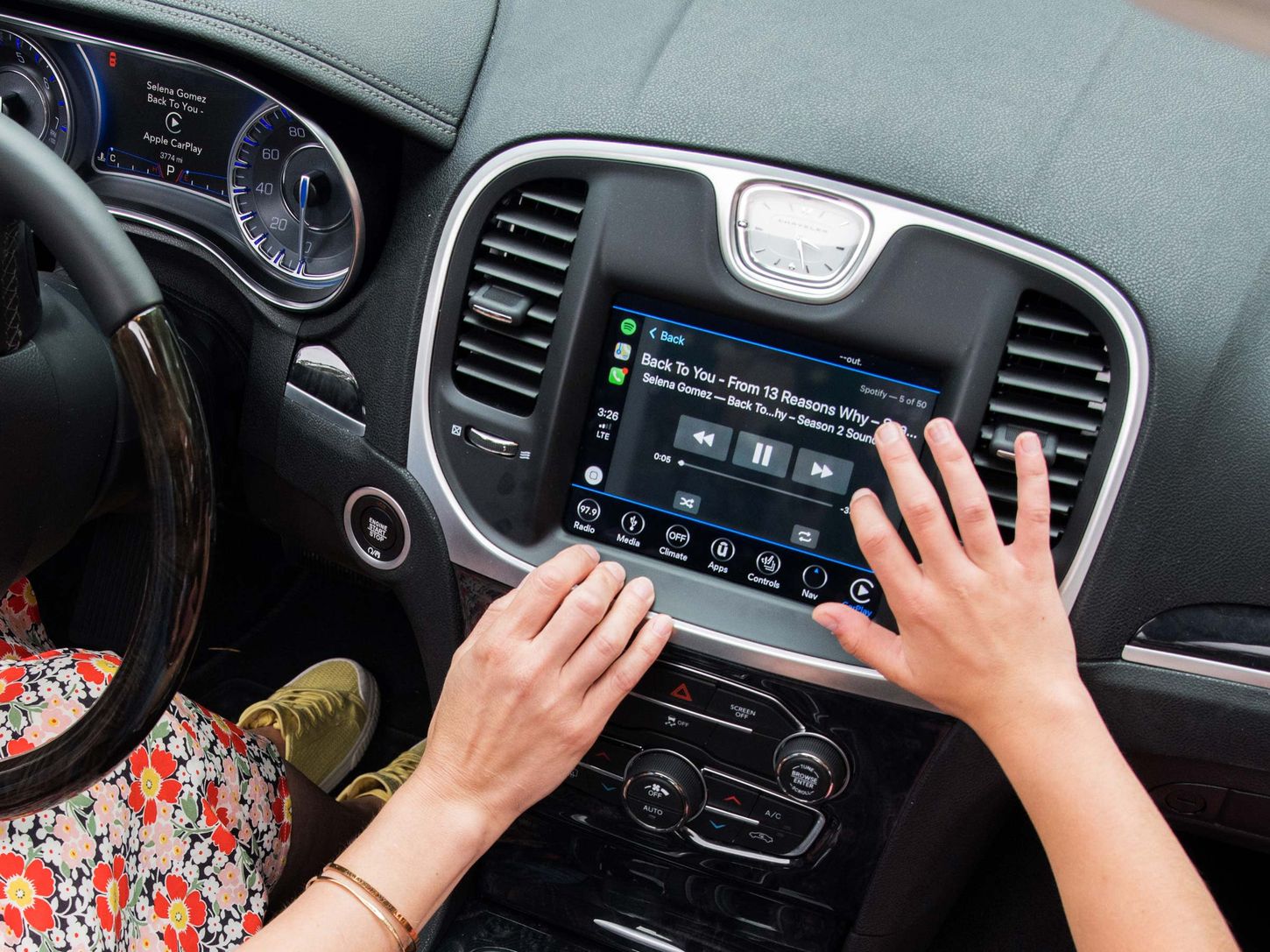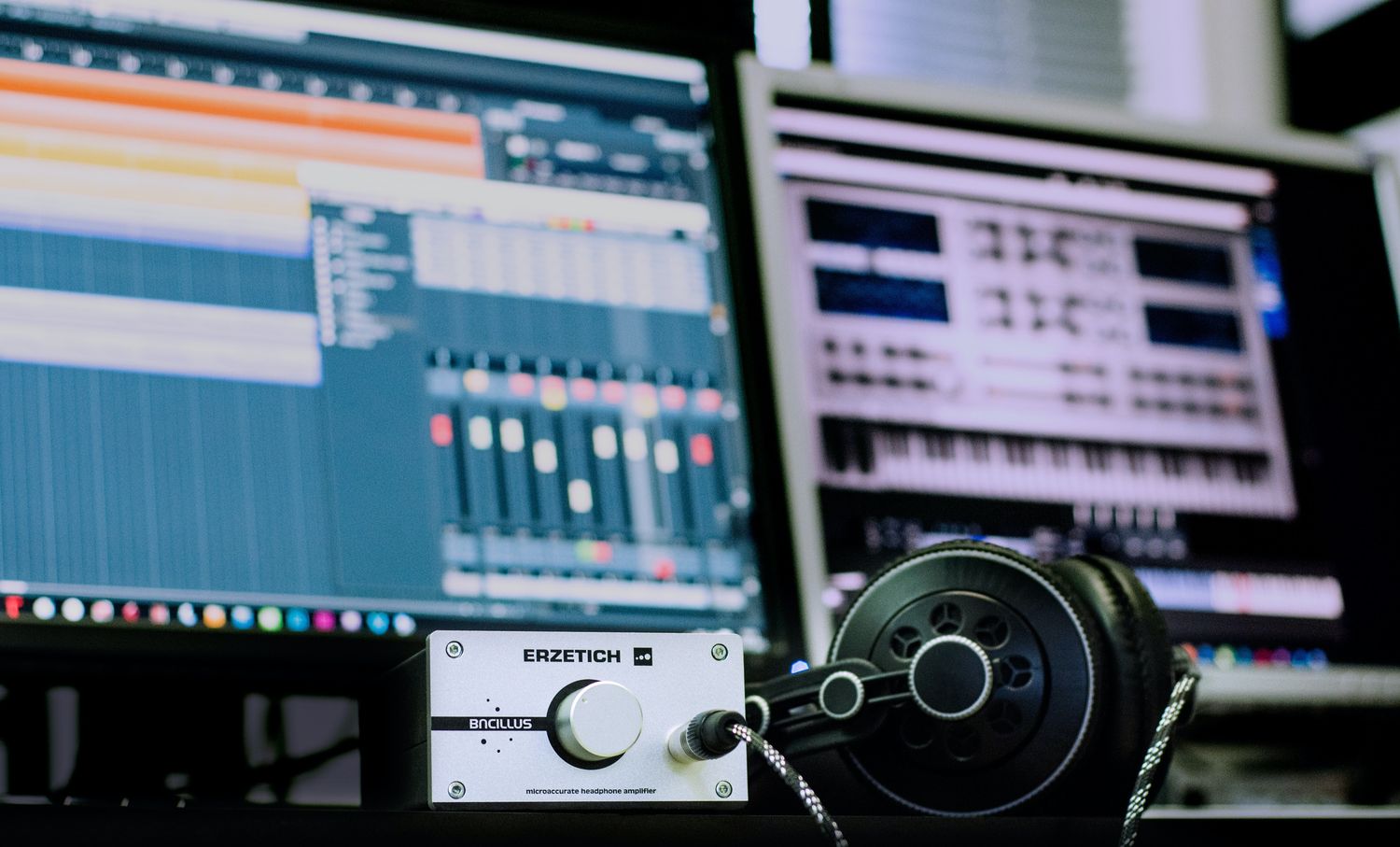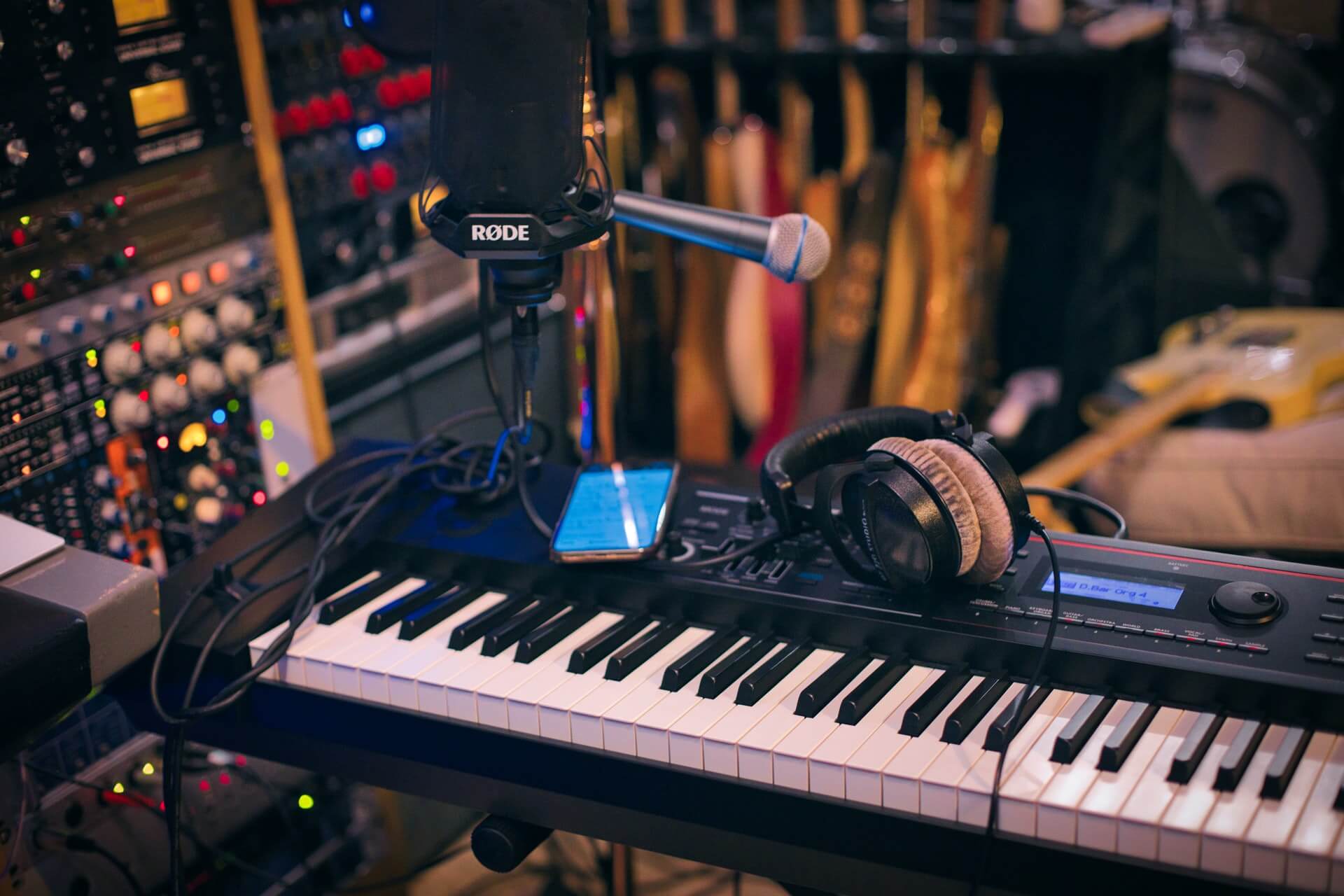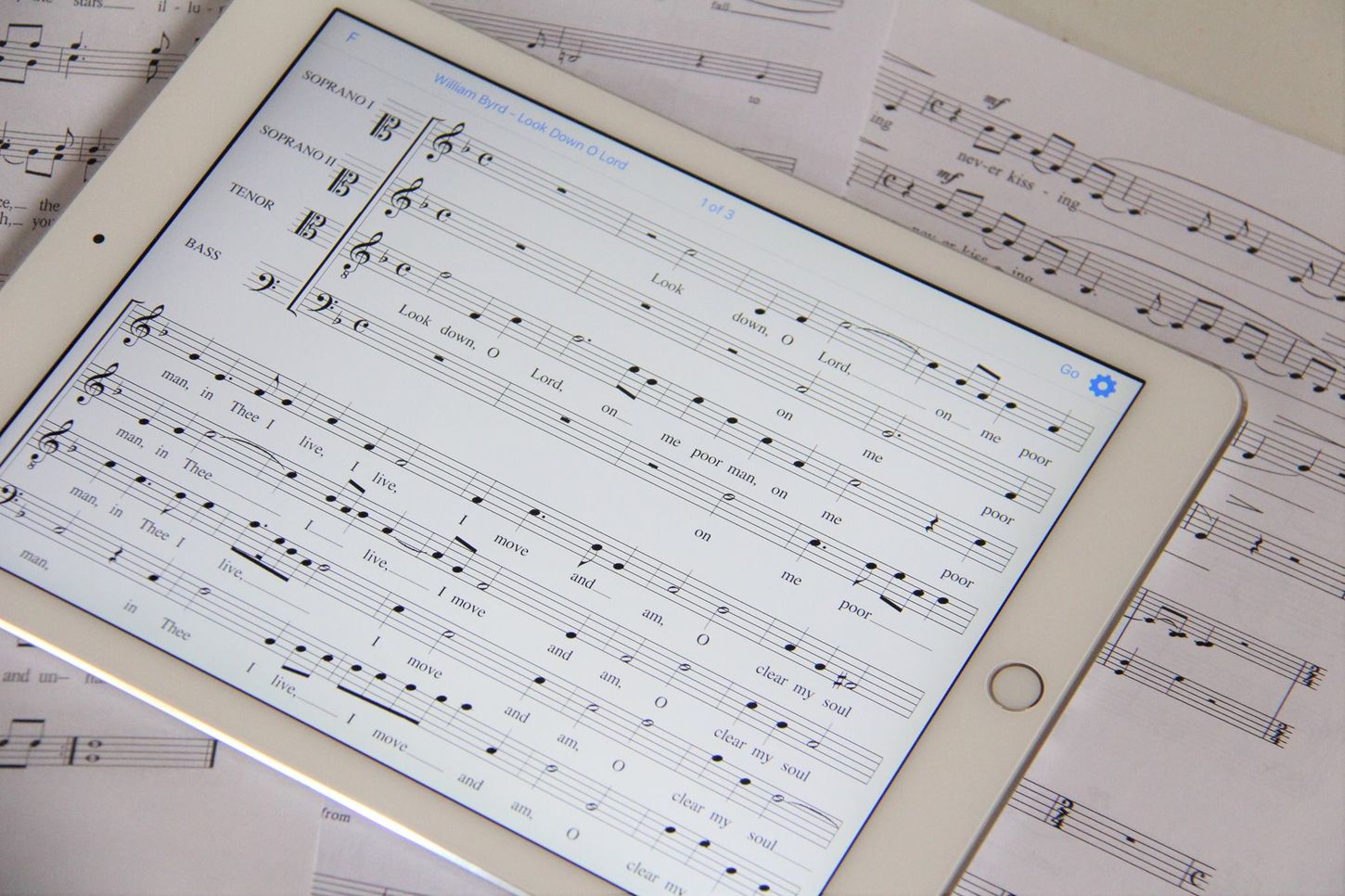Home>Production & Technology>Digital>How Purchasing Digital Music Works


Digital
How Purchasing Digital Music Works
Published: March 10, 2024
Learn how purchasing digital music works and explore the convenience of buying and downloading your favorite songs online. Discover the process and benefits of digital music purchases.
(Many of the links in this article redirect to a specific reviewed product. Your purchase of these products through affiliate links helps to generate commission for AudioLover.com, at no extra cost. Learn more)
Table of Contents
Introduction
In today's digital age, music has become more accessible than ever before. With the rise of digital music platforms and online stores, music enthusiasts can easily explore and enjoy a vast array of songs and albums with just a few clicks. This transformation in the music industry has revolutionized the way people discover, purchase, and listen to their favorite tunes.
The convenience and flexibility offered by digital music have significantly altered the traditional music consumption landscape. Gone are the days of physical CDs and tapes; now, music lovers can instantly access their favorite tracks through various digital platforms. This shift has not only streamlined the music acquisition process but has also opened up new avenues for artists to share their creations with a global audience.
As we delve into the intricacies of purchasing digital music, it's essential to understand the underlying mechanisms that drive this modern method of acquiring musical content. From the diverse range of payment options available to the intricacies of digital rights management, there are several facets to consider when navigating the digital music landscape. By gaining insight into these aspects, consumers can make informed decisions about how they choose to access and enjoy their favorite tunes.
In the following sections, we will explore the nuances of purchasing digital music, including the various payment methods, the differences between downloading and streaming, and the role of digital rights management in safeguarding intellectual property. By shedding light on these elements, we aim to provide a comprehensive understanding of how digital music consumption works in today's dynamic and ever-evolving music industry.
Understanding Digital Music
In the digital era, music has transcended physical boundaries and found a new home in the virtual realm. Digital music refers to audio content that is stored and transmitted in a digital format, allowing for seamless accessibility and portability. Unlike traditional physical media such as CDs or vinyl records, digital music exists in the form of files that can be easily transferred, shared, and enjoyed across various devices.
One of the defining characteristics of digital music is its versatility. With the advent of digital music platforms and online stores, music enthusiasts can explore an extensive catalog of songs, albums, and playlists, catering to diverse tastes and preferences. This vast digital library offers a level of convenience and choice that was previously unimaginable, empowering listeners to curate personalized music collections with ease.
Moreover, digital music has redefined the concept of music ownership. Rather than possessing a tangible copy of a song or album, individuals can now own digital copies stored on their devices or in the cloud. This shift has not only minimized physical clutter but has also facilitated instant access to music anytime, anywhere. Whether it's a classic rock anthem or the latest chart-topping hit, digital music ensures that the entire spectrum of musical content is just a few taps away.
Furthermore, digital music has fostered a global community of music enthusiasts, transcending geographical barriers and connecting individuals with a shared passion for music. Through digital platforms, artists can reach a worldwide audience, enabling their music to resonate with listeners across continents. This interconnectedness has enriched the music landscape, allowing for the discovery of new genres, artists, and cultural influences that might have remained undiscovered in a pre-digital era.
In essence, understanding digital music entails recognizing its transformative impact on the way music is consumed, shared, and appreciated. It embodies a paradigm shift that has empowered both artists and listeners, fostering a dynamic ecosystem where creativity thrives and musical experiences are boundless. As we navigate the intricacies of purchasing digital music, acknowledging the profound influence of digital music on the modern music industry is essential for embracing the evolving nature of musical expression and enjoyment.
Purchasing Digital Music
Purchasing digital music has revolutionized the way individuals acquire and enjoy their favorite songs and albums. With the transition from physical media to digital formats, music enthusiasts now have a myriad of options to access and own musical content. Whether it's a timeless classic or the latest chart-topping hit, the process of purchasing digital music offers unparalleled convenience and flexibility.
Digital music can be acquired through various online platforms and stores, each offering a diverse selection of songs and albums across different genres. These platforms serve as virtual marketplaces, where users can browse, preview, and purchase digital copies of their preferred musical content. Additionally, digital music stores often feature personalized recommendations and curated playlists, enhancing the overall music discovery experience for consumers.
When purchasing digital music, individuals have the flexibility to buy individual tracks or entire albums, tailoring their purchases to align with their specific preferences. This a la carte approach allows for greater customization, enabling listeners to curate their digital music libraries with precision. Moreover, the instantaneous nature of digital music purchases ensures that users can access their newly acquired content without delay, eliminating the need to wait for physical delivery or visit a brick-and-mortar store.
Furthermore, the availability of digital music across multiple devices enhances the accessibility and portability of musical content. Whether it's a smartphone, tablet, laptop, or dedicated music player, digital music can seamlessly accompany individuals throughout their daily routines. This seamless integration across devices ensures that music enthusiasts can enjoy their favorite tunes anytime, anywhere, without being tethered to a specific physical medium.
In addition to individual purchases, digital music subscription services have gained prominence, offering users unlimited access to vast music libraries for a recurring fee. These subscription-based models provide a cost-effective and expansive approach to music consumption, granting subscribers the freedom to explore and enjoy an extensive catalog of songs and albums without the need for individual purchases.
Overall, the process of purchasing digital music embodies a modernized approach to music acquisition, characterized by convenience, choice, and instant accessibility. As digital platforms continue to evolve and innovate, the landscape of purchasing digital music is poised to further enhance the music listening experience, empowering individuals to immerse themselves in a world of musical expression and creativity.
Payment Methods
In the realm of purchasing digital music, the availability of diverse payment methods plays a pivotal role in facilitating seamless transactions and enhancing the overall user experience. From traditional credit and debit cards to modern digital wallets and prepaid options, the array of payment methods offered by digital music platforms caters to the varied preferences and requirements of consumers.
Credit and debit cards stand as the cornerstone of digital music purchases, offering a widely accepted and familiar payment mechanism for users. By securely inputting card details, individuals can swiftly complete transactions, enabling instant access to their chosen musical content. The widespread acceptance of credit and debit cards ensures that users can effortlessly navigate the digital music landscape, making purchases without encountering payment barriers.
In addition to traditional payment cards, digital music platforms often integrate alternative payment methods, such as digital wallets and prepaid options. Digital wallets, characterized by platforms like PayPal, Google Pay, and Apple Pay, provide users with a streamlined and secure payment experience, leveraging stored payment information for swift transactions. These digital wallet solutions not only enhance convenience but also bolster the security of online purchases, instilling confidence in users as they acquire digital music.
Furthermore, prepaid options, including gift cards and prepaid credit cards, offer a flexible and accessible avenue for purchasing digital music. These prepaid instruments empower individuals to pre-load a specific amount onto the card, which can then be utilized to procure digital music without the need for direct linkage to personal banking or credit accounts. This approach appeals to users seeking enhanced control over their digital music expenditures while ensuring a hassle-free payment process.
Moreover, the emergence of cryptocurrency as a viable payment method for digital music purchases has expanded the spectrum of payment options available to consumers. With select digital music platforms embracing cryptocurrency transactions, users can leverage digital currencies such as Bitcoin and Ethereum to acquire their favorite musical content, tapping into the decentralized and borderless nature of cryptocurrencies to facilitate seamless transactions.
By offering a diverse array of payment methods, digital music platforms cater to the evolving preferences and needs of consumers, fostering an inclusive and user-centric approach to music acquisition. The availability of multiple payment options not only enhances accessibility but also reflects the adaptability of digital music platforms in embracing emerging trends and technologies, ensuring that users can engage in frictionless and secure transactions as they embark on their digital music journey.
Downloading and Streaming
Downloading and streaming represent two primary methods through which individuals access and enjoy digital music, each offering distinct advantages and considerations. Understanding the nuances of downloading and streaming is essential for navigating the diverse landscape of digital music consumption.
Downloading Music
Downloading music involves acquiring digital audio files from online platforms and storing them locally on a device or in the cloud. This method grants users ownership of the downloaded content, allowing for offline playback without the need for a continuous internet connection. Whether it's a single track or an entire album, downloaded music provides individuals with a tangible copy of the audio content, empowering them to curate personalized music libraries.
One of the key benefits of downloading music is the ability to enjoy high-fidelity audio, as downloaded files often preserve the original quality of the recordings. This ensures that listeners can experience the full depth and richness of their favorite songs, making downloading an appealing option for audiophiles and music enthusiasts who prioritize audio fidelity.
Furthermore, downloaded music offers unparalleled flexibility, enabling users to transfer and access their digital music across multiple devices without constraints. Whether it's transferring songs to a portable music player or syncing them across smartphones and computers, downloaded music provides a seamless and versatile listening experience, unrestricted by internet connectivity.
Streaming Music
Streaming music, on the other hand, involves accessing audio content in real-time over the internet, without the need to store the files locally. This method grants users instant access to an extensive catalog of songs and albums, allowing for on-demand playback without the necessity of downloading and managing individual files.
The allure of streaming music lies in its convenience and accessibility. With streaming platforms offering vast libraries of music, users can explore and discover new content with ease, without the commitment of purchasing individual tracks or albums. This approach fosters a dynamic and exploratory music listening experience, empowering users to delve into diverse genres and artists without limitations.
Moreover, streaming music embraces the concept of music discovery and curation, often featuring personalized playlists, algorithm-driven recommendations, and curated radio stations. This curated approach introduces users to new music based on their preferences, creating a tailored and immersive listening journey that transcends traditional music consumption.
In essence, both downloading and streaming offer distinct pathways for accessing and enjoying digital music, each catering to different preferences and usage scenarios. Whether it's the ownership and fidelity of downloaded music or the convenience and exploration of streaming, both methods contribute to the vibrant and evolving landscape of digital music consumption.
Digital Rights Management
Digital Rights Management (DRM) serves as a critical component in the realm of digital music, encompassing a set of technologies and protocols designed to safeguard the intellectual property rights of content creators and rights holders. At its core, DRM aims to regulate the distribution, usage, and access of digital music, ensuring that artists and copyright owners retain control over their creations in the digital domain.
One of the primary functions of DRM in the context of digital music is to enforce copyright protection, mitigating unauthorized distribution and reproduction of copyrighted audio content. By implementing encryption and access control mechanisms, DRM empowers rights holders to dictate the terms of usage for digital music, thereby preserving the value and integrity of their intellectual property.
Furthermore, DRM facilitates the management of licensing and usage rights associated with digital music, enabling rights holders to define specific parameters for how their content can be accessed and utilized. This includes delineating the number of devices on which music can be played, imposing restrictions on copying and sharing, and regulating the duration of access to digital music, all of which contribute to maintaining the commercial viability and exclusivity of the content.
In the realm of digital music distribution, DRM plays a pivotal role in combating piracy and unauthorized redistribution, safeguarding the economic interests of artists and record labels. By integrating DRM measures into digital music files, rights holders can deter illicit dissemination of their content, thereby fostering a sustainable ecosystem where creators are duly compensated for their artistic contributions.
Moreover, DRM extends its influence to digital music streaming services and subscription platforms, where it serves as a mechanism for enforcing licensing agreements and usage policies. Through DRM, streaming platforms can uphold contractual obligations with rights holders, ensuring that the distribution and playback of digital music adhere to the stipulated terms, thereby fostering a harmonious relationship between content creators and distribution channels.
While DRM serves as a safeguard for intellectual property rights, it also engenders discussions regarding the balance between content protection and user freedom. The implementation of DRM measures necessitates a delicate equilibrium between protecting the interests of rights holders and preserving the user experience, prompting ongoing dialogues about the intersection of digital rights management, consumer rights, and technological innovation.
In essence, the role of DRM in the context of digital music underscores its significance in upholding the rights and interests of content creators, while also prompting nuanced considerations about the evolving landscape of digital content distribution and consumption. As the digital music industry continues to evolve, the interplay between DRM, user accessibility, and content protection remains a focal point in shaping the future of music consumption in the digital age.
Conclusion
In conclusion, the landscape of purchasing digital music embodies a dynamic fusion of technological innovation, consumer empowerment, and artistic expression. The transition from physical media to digital formats has redefined the music consumption experience, offering unparalleled convenience, choice, and accessibility to music enthusiasts worldwide. As individuals navigate the intricacies of purchasing digital music, they are presented with a diverse array of payment methods, the option to download or stream content, and the underlying framework of digital rights management.
The evolution of digital music has transcended traditional boundaries, fostering a global community of music enthusiasts and providing artists with unprecedented avenues to share their creations. The digital realm has democratized music discovery, enabling listeners to explore an extensive catalog of songs and albums, spanning genres, eras, and cultural influences. This interconnectedness has enriched the music landscape, fostering a vibrant ecosystem where creativity thrives and musical experiences are boundless.
Moreover, the availability of diverse payment methods has enhanced the accessibility and inclusivity of digital music platforms, catering to the varied preferences and requirements of consumers. From traditional credit and debit cards to modern digital wallets and cryptocurrency options, the spectrum of payment methods reflects the adaptability and user-centric approach of digital music platforms.
The dichotomy between downloading and streaming music offers users distinct pathways for accessing and enjoying digital content, each catering to different preferences and usage scenarios. Whether it's the ownership and fidelity of downloaded music or the convenience and exploration of streaming, both methods contribute to the dynamic and evolving landscape of digital music consumption.
Furthermore, the role of digital rights management in safeguarding the intellectual property rights of content creators underscores its significance in preserving the value and integrity of digital music. While DRM serves as a mechanism for combating piracy and unauthorized distribution, it also prompts discussions about the balance between content protection and user freedom, shaping ongoing dialogues about the intersection of digital rights management, consumer rights, and technological innovation.
As the digital music industry continues to evolve, the interplay between technological advancements, consumer preferences, and artistic integrity will continue to redefine the landscape of music consumption. By embracing the transformative power of digital music, individuals can immerse themselves in a world of musical expression and creativity, where the boundaries of discovery and enjoyment are limitless.

